#MRI Projector
Explore tagged Tumblr posts
Text
The Role of Technology in Understanding Human Behaviour
Technology has always played a very big role in helping us move forward with our understanding of human behaviour. From the very early days of behavioural psychology to the most advanced research in neuroscience today, we have had technological innovations that help us find out how we think, feel, and act. These tools are proving to be more essential every day in both research and clinical settings as we delve even deeper inside the labyrinth called the human mind.
Research in human behaviour has undergone some quintessential changes over the last couple of decades. The means have evolved from the earlier traditional techniques of observation and self-reporting to more sophisticated ways of accumulating information that is objective and quantifiable. Of these, technologies related to neuroimaging have had a special place. For example, functional Magnetic Resonance Imaging, or fMRI, can show real-time activity of the brain, giving new insights into which neural mechanisms underlie behaviour.

This genuinely tips the scale from purely observational techniques to data-driven approaches within the disciplines of psychology and neuroscience. It has brought the capacity to quantify the activity of the brain as a function of various stimuli, the influence of diverse environments on mental states, and neural correlates of choice. This new technology-based approach gives more correct, granular models of human behaviour, which helps in the prediction and influence of behavioural outcomes.
The development of functional magnetic resonance imaging systems has been included in the list of the most significant technological breakthroughs in human behaviour research. They are not only applied in basic academic studies but even in clinical practices to acquire insight into the functioning of the brain. While the areas of application for traditional MRI were related to structural imaging, fMRI detects changes in blood flow, which allows measures of brain activity. This allows researchers to examine all functional areas of the brain, including which parts of it are activated during different tasks or emotional states.

It involves an fMRI visual system, which makes it possible to present visual stimuli to a subject under observation by measuring brain activity in response to the respective stimuli. Such systems include but are not limited to, MRI-compatible displays and specially designed fMRI monitors to work within the magnetic environment generated by an MRI machine. These are important tools in ensuring that the data gathered is accurate and reliable, free from interferences that may distort results.
In particular, advanced medical technologies diffuse very fast in India, and the presence of In-Bore MRI systems is increasing significantly. It shall provide a better ambience to the patients for comfortable staying during the scan within the MRI in-bore. This becomes extremely important to behavioural studies where patient relaxation can alter the quality of the data collected. Technologies such as virtual skylights for healthcare and MRI cinema for healthcare are being integrated into MRI systems to create a soothing atmosphere and lower anxiety levels, improving patient cooperation.

Technology integration into the MRI environment is not limited to research. Great innovations, like MRI projectors, MRI-compatible monitors, and MRI-compatible screens, have made much for a better experience for patients while going through an MRI scan. These tools mollify the patient by engaging them with scenery or movies of a mollifying nature during their scan, hence reducing stress and anxiety.
These are technologies that are not only imperative in improving ambience but also in ensuring patient compliance, especially on scans where the patient is required to remain still for quite a long time. A good example is the MRI-compatible stretcher or MRI-compatible wheelchairs, which are fully functional within the MRI environment, ensuring minimal movement by the patient and smooth running of the scan.
Kryptonite Solutions has been one of the prime innovators at the forefront. Their contribution to the development of MRI healthcare systems used in behavioural research and clinical practice is immense. Their products, such as MRI-compatible displays and fMRI monitors, have been massively installed across facilities in India, giving researchers and clinicians the tools necessary for producing quality studies and enabling the delivery of exceptional patient care.

Advancing technology will further enhance our ability to analyse and learn from human behaviour. Sophisticated neuroimaging techniques, notably functional magnetic resonance imaging, will offer new research possibilities in the coming future. Interdisciplinary approaches will be applied at an even greater level of detail regarding how the brain responds to stimuli, hence more tailored and effective interventions.
Also, further development of MRI-compatible cameras and MRI-compatible TVs will enhance methods of data collection, enabling more dynamic and more interactive studies. As technologies become more sophisticated, they will be able to help researchers explore intricacies of human behaviour that hitherto have been unimaginable.
Technology cannot be outside the role it plays in understanding human behaviour. It went on to redesign the study of the human mind, from high-end imaging techniques of neuroscience to the most patient-friendly environments brought forth by the MRI in-bore experience enhancements. The future for behavioural research never looked so bright with new-aged companies like Kryptonite Solutions leading the way on new products and innovative ideas. Every new technology that is opening new avenues of investigation brings us closer to the full understanding of the complexity of human behaviour and therefore closer to a better way of life, learning, and healing.
#fMRI monitor#fMRI visual system#health#mri#MRI compatible CCTv#MRI compatible monitor#MRI compatibles#MRI Projector#MRI Transport#mri compatible stretcher#mri compatible wheelchair
1 note
·
View note
Text
[Image ID: Tweet from verified user kenzi (@/ kenzianIdiot) on 04 Jun 24 reading: there was an aquarium projector in the MRI today and they had to pause the scan twice to say "please stop moving your head to watch the fish." i am 31 years old /End ID]

2K notes
·
View notes
Text
Discover Student Success at Rohilkhand Medical College and Hospital (RMCH)
Choosing the right college is a big step for every student, especially when you're dreaming of becoming a doctor. Rohilkhand Medical College and Hospital (RMCH) in Bareilly, Uttar Pradesh, offers a student-focused environment with modern medical training, friendly campus life, and practical learning. Let’s explore why RMCH is a top choice for future doctors.
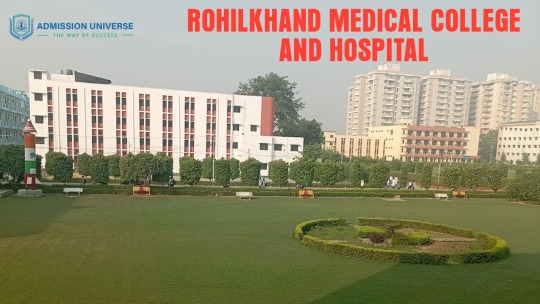
1. Well-Rounded Medical Programs 🎓
Rohilkhand Medical College and Hospital (RMCH) offers robust academic courses:
MBBS – a 5.5‑year course that includes a 1‑year rotating internship. RMCH admits 250 students each year based on NEET-UG scores—so competition pushes students to perform their best reddit.com+15en.wikipedia.org+15futeducation.com+15.
MD and MS – 3‑year postgraduate programs with 141 total seats across 20 specialties, like Pediatrics, Surgery, Obstetrics & Gynecology, and more, all selected via NEET-PG propelld.com+4collegedunia.com+4bams-admissions.com+4.
Nursing and paramedical diplomas – including B.Sc. Nursing, M.Sc. Nursing, GNM, ANM, and diplomas in X-ray, MRI, Dialysis, and Lab Technology futeducation.com.
This diverse curriculum guides students through every stage of their medical careers, from foundational learning to specialisation.
2. Modern Campus & Equipment
RMCH’s campus supports academic needs and student comfort:
A full‑fledged hospital with 720+ beds and multiple departments (Medicine, Surgery, Orthopaedics, Pediatrics, Obstetrics & Gynecology, Psychiatry), serving around 1,500 patients daily in OPDreddit.com+15bams-admissions.com+15collegeduniyabharat.com+15.
Lecture halls equipped with AC, projectors, and multimedia tools; a central library with books, journals, and e-resources for more than 200 students collegedunia.com+3shiksha.com+3bams-admissions.com+3.
Modern labs for anatomy, physiology, biochemistry, pathology, and pharmacology, giving students hands‑on training collegeduniyabharat.com+2bams-admissions.com+2collegedunia.com+2.
Strong infrastructure ensures students gain both theoretical insights and real-world clinical skills.
3. Supportive & Expert Faculty
At RMCH, faculty members are dedicated and accessible:
Experienced teachers in all departments—like Dr. Syed Hasan Hyder Zaidi (Anatomy), Dr. Ayaz Khurram Mallick (Biochemistry), Dr. Santosh Kumar (Psychiatry)—support students in clinical and theoretical learning reddit.com+15propelld.com+15shiksha.com+15.
Good faculty-to-student ratio, structured exam schedules, and clear academic guidance help students succeed in theory and practical exams .
Great teachers make learning engaging and help students feel confident.
4. Active Campus Life & Practical Experience
Students at Rohilkhand Medical College and Hospital (RMCH) balance studies with enriching experiences:
Sports facilities include cricket, basketball, volleyball, badminton courts, and a gym. Cultural events such as fests, seminars, and workshops stimulate creativity and teamwork collegedunia.com+15collegedunia.com+15futeducation.com+15zollege.in.
Hospital experience starts early: clinical rotations begin during MBBS and students gain exposure through internship in areas like emergency, OPD, ICU, and community camps .
Community outreach includes medical camps, immunisation drives, and public health initiatives, helping students connect theoretical learning with real-world impact .
Between sports, studies, and fieldwork, students grow beyond textbooks.
5. Life on Campus & Hostels
Campus life at RMCH balances discipline with comfort:
Hostel facilities include separate rooms for boys and girls, basic furnishings, fan, table, mattress, with optional AC for extra fees collegedunia.com.
Mess food is nutritious but sometimes repetitive; many students choose to add variety by ordering or self-cooking reddit.com+11collegedunia.com+11zollege.in+11.
Quiet campus atmosphere with imposed rules—for example, limited outings and strict discipline—which help students focus on studies but may restrict freedom reddit.com+6reddit.com+6reddit.com+6.
6. Student Feedback & Culture
Students share real-world insights into life at Rohilkhand Medical College and Hospital (RMCH):
“Good patient flow and also located inside the city … you can definitely go for it.” reddit.com+15reddit.com+15futeducation.com+15 “Faculty are nice and put in effort to teach … placement after the mbbs … up to 1 lakh package.” reddit.com+2zollege.in+2zollege.in+2
Some mention strict rules and fines, but most value the supportive faculty and hospital exposure zollege.in.
7. Admission & Fees Breakdown
Here’s the basic information prospective students need:
MBBS: 250 seats, 5.5‑year course, ₹13 lakh + ₹86,000 per year, eligibility via NEET‑UG and 10+2 with 50% PCB bams-admissions.com+2collegedunia.com+2propelld.com+2.
MD/MS: 141 seats across 20 specialities; costs vary from ₹10,000 to ₹23 lakh per year, admission through NEET‑PG collegeduniyabharat.com+2collegedunia.com+2propelld.com+2.
Nursing & Allied: B.Sc Nursing ₹72,000/year, M.Sc Nursing ₹1,08,000/year; diplomas cost ₹36,000 to ₹1,75,000 yearly .
Admissions follow NEET counselling; students must submit documents like admit card, mark sheets, and ID proof .
Why RMCH Clicks with Students
Balanced Learning – Combines strong academics with practical and research experience.
Real Hospital Work – Early exposure in a busy hospital builds confidence and skills.
Campus Harmony – Peaceful, green surroundings support focused study.
Supportive Faculty – Teachers guide students personally and academically.
Varied Student Activities – Sports, fests, internships, and outreach encourage well‑rounded growth.
Final Thoughts
If you're in +2 aiming for medicine, Rohilkhand Medical College and Hospital (RMCH) offers a comprehensive platform—strong academics, practical exposure, and a supportive campus. While it has strict discipline, the benefits of hospital training and quality education make it a compelling choice for future doctors.
#mbbs#mbbs in india#mbbs in up#study mbbs in up#best mbbs medical college in up#Rohilkhand Medical College and Hospital (RMCH)
0 notes
Text
Medical Projector Trends: Growth, Innovations, and Future Prospects
Medical projectors are transforming the healthcare landscape, offering cutting-edge solutions for diagnostics, education, and surgical precision. In 2025, advancements in medical projector technology are reshaping how healthcare professionals visualize complex data and communicate with patients. This blog explores the growth trends, key innovations, and future prospects of medical projectors, shedding light on their increasing importance in the medical field. The Growing Demand for Medical Projectors in Healthcare Medical projectors have become indispensable in healthcare settings, driven by the need for accurate visualization and enhanced collaboration. Their applications range from displaying medical imaging to facilitating surgical guidance and training. Market Growth Trends Global Market Expansion: The medical projector market is projected to grow at a CAGR of 7.5% between 2023 and 2030. Adoption Across Sectors: Hospitals, clinics, and medical training institutions are the largest consumers of this technology. Increased Investment: Governments and private organizations are investing in visualization technology to improve healthcare outcomes. Key Innovations in Medical Projector Technology 1. 4K and 8K Resolution for Enhanced Imaging High-resolution projectors are setting new standards for medical imaging. These projectors deliver unparalleled clarity, enabling healthcare professionals to analyze intricate details with precision. Applications: Surgical procedures requiring detailed visualization. Diagnostic imaging, such as X-rays, MRIs, and CT scans. Interactive patient education and consultation. 2. Integration with AR and VR Technologies Medical projectors are increasingly integrated with augmented reality (AR) and virtual reality (VR) systems, providing immersive visualization for surgeries and medical training. Benefits: Real-time overlays for surgical guidance. Enhanced learning experiences for medical students. Virtual simulations for complex procedures. 3. Compact and Portable Designs The latest medical projectors are lightweight, portable, and easy to use, making them suitable for diverse healthcare environments, including remote and rural clinics. Features to Note: Battery-operated designs for portability. Wireless connectivity for seamless data sharing. Compatibility with tablets and laptops for on-the-go use. 4. AI-Powered Projectors Artificial Intelligence is transforming medical projectors by enabling advanced functionalities like automated adjustments, predictive analytics, and image enhancement. Examples: AI-based noise reduction for clearer visuals. Predictive algorithms for pre-surgical planning. Real-time data analytics displayed alongside imaging. Key Use Cases of Medical Projectors in 2025 1. Surgical Precision Medical projectors assist surgeons by displaying real-time, high-definition visuals of the surgical site, often integrated with AR for improved accuracy. 2. Diagnostic Imaging Radiologists use medical projectors to analyze and interpret complex imaging data, improving diagnostic accuracy and patient outcomes. 3. Medical Education In classrooms and training labs, projectors enhance learning by enabling interactive presentations, 3D modeling, and immersive simulations. 4. Patient Communication Doctors can use projectors to explain conditions and treatment plans visually, improving patient understanding and engagement. Future Prospects of Medical Projectors 1. Increased AI Integration The future of medical projectors lies in their ability to leverage AI for smarter, more interactive functionalities. Predictive visualization and real-time anomaly detection will redefine medical imaging. 2. Wider Adoption of Holographic Displays Holographic projectors are expected to revolutionize medical training and surgical planning by providing 3D, interactive visuals that can be viewed from multiple angles. 3. Enhanced Telemedicine Support As telemedicine
continues to grow, portable medical projectors will play a critical role in enabling remote consultations and diagnostics. 4. Sustainability Initiatives Manufacturers are focusing on eco-friendly designs with lower energy consumption and recyclable components, aligning with global sustainability goals. Top Medical Projector Brands to Watch in 2025 1. Sony Medical Projectors Known for their high-resolution displays and advanced imaging capabilities. 2. Barco Healthcare Leaders in surgical imaging projectors with innovative AR integration. 3. Epson Pro AV Providing compact, reliable, and affordable options for clinics and hospitals. 4. Christie Digital Specialized in ultra-high-definition projectors for surgical and diagnostic applications. Challenges in Adopting Medical Projector Technology While the potential is immense, challenges persist: High Initial Costs: Advanced medical projectors require significant investment. Training Requirements: Healthcare professionals need training to fully utilize these tools. Infrastructure Limitations: Rural areas may face hurdles in adopting projector technology due to inadequate infrastructure. Shaping the Future of Healthcare Visualization The medical projector market is poised for remarkable growth, driven by innovations in resolution, portability, and AI integration. As healthcare systems continue to adopt these technologies, medical projectors will play a pivotal role in enhancing diagnostics, surgeries, and patient care. By embracing these advancements, the medical community can look forward to a future where precision, efficiency, and accessibility are at the forefront of healthcare.
0 notes
Text
4K Display Resolution: Impact on Gaming and Virtual Reality Experiences

4K Display Resolution refers to a display technology with a resolution of approximately 4,000 pixels across the horizontal axis, offering four times the pixel count of Full HD (1080p) displays. This resolution is often described as 3840 x 2160 pixels in consumer electronics, providing a total of about 8.3 million pixels. This high pixel density results in significantly sharper and more detailed images, enhancing visual clarity and overall viewing experience.
The rise of 4K resolution has been driven by its application across various sectors, from entertainment to professional work environments. In consumer electronics, 4K displays are now standard in high-end televisions, computer monitors, and projectors. The increased pixel count allows for more detailed and lifelike images, making it ideal for large screens where pixelation would be more noticeable with lower resolutions. This is particularly valuable for home theaters and gaming, where the immersive quality of 4K enhances the realism and depth of visual content.
In the realm of gaming, 4K resolution delivers a substantial improvement in visual fidelity. Games designed to leverage 4K resolution can present finer textures, more intricate details, and more vibrant colors, contributing to a more immersive experience. However, this level of detail requires powerful graphics hardware to maintain high frame rates, making it a consideration for gamers seeking top-tier performance.
4K resolution is also transformative in professional fields such as digital content creation and medical imaging. For photographers and videographers, the increased resolution provides greater precision in editing and allows for more detailed displays of high-resolution content. In medical imaging, 4K displays are utilized for clearer visualization of complex images, such as MRI scans and detailed diagnostic imagery, aiding in more accurate assessments and diagnoses.
The transition to 4K resolution also influences content consumption and creation. Streaming services like Netflix, Amazon Prime Video, and Disney+ offer 4K content to take advantage of the enhanced resolution, although the availability and quality of such content can vary. As 4K becomes more common, there is a growing trend towards producing media in this high resolution to meet consumer expectations for better quality.
Despite its advantages, there are considerations associated with 4K resolution. The technology often comes with a higher price point compared to lower resolutions, and the increased data bandwidth required for streaming 4K content can necessitate faster internet connections. Additionally, the benefits of 4K resolution are more pronounced on larger screens or when viewed up close, meaning that smaller screens might not fully exploit the advantages.
As technology continues to advance, 4K resolution is likely to become more prevalent, potentially paving the way for even higher resolutions like 8K. For now, 4K stands as a significant milestone in display technology, offering a clearer, more detailed visual experience across a range of applications and devices.
0 notes
Text
oh, i love it! i especially love this multi level reading, which ties together the (at times bizarro nonsensical seeming) surface level, the johnlock metaphorical level, and the whole character history meta level. wow! the meta level is the real bones of the show, but of course there has to be something on the surface in order for it to be a tv show and not just an obscure lit crit essay that hardly anyone would know about let alone read.
couple things leapt out at me.
that screen cap in the "spinning plates" scene, sherlock's aha moment, he's centered in frame, in front of a window, backlit. so there's an (oblique, filtered) element of the projector light effect that has also been extensively discussed, and most recently someone--i'm sorry i didn't make a note of who, i rb it sort of recently--suggested that lights pointed directly into the camera, at the audience, are to illuminate US, not just the crime scene. (that bus they jumped in front of in TRF, also screencapped above, is another)
John getting banished from sherlock's hospital room and having to break in, gosh that is not even a metaphor for the problems gay couples had (or still have) pre marriage equality! ouch.
and the natural progression from the heart scan to the brain scan, is depicted on screen in TFP with all those brain mri images in the sherrinford control room! i apologize if i just anticipated your chapter two of this meta!
now off to refresh my memory of the linked metas, and @possiblyimbiassed 's whiskey tango xray one about the brain scans.
Spinning Plates and The Wrong Thumb (‘Sherlock’ meta)
So, this is the new meta I’ve been teasing you all with. (Took me long enough, I know, I know…)
I also know that, by now, the ‘Sherlock’ fandom has its own established interpretation of what the phrase, “The place was spinning” in s4ep1 (TST) means, but I’d like to offer an alternative, EMP-inspired idea here:

Keep in mind that I’m convinced that by s4 Sherlock is actually unconscious and lying in a hospital (as per EMP theory).
So, what is that one magical “place” in a hospital that is literally spinning?
Yes. A CT scanner!
Could it be that, in TST, Sherlock has just worked out that he is lying in a CT scanner, being scanned?
Look at this strange exchange between John and Sherlock again:
John: Sherlock, you can’t go on spinning plates like this. Sherlock: That’s it. The place was spinning.
So, here’s the thing: Mofftiss love themselves a good pun. So forget about ‘spinning plates’ being a commonly used idiom in the English language. Don’t even think about some circus acrobat literally spinning dinner plates made of fine china on many a thin pole.
Think of different plates. Yes, those kinds of plates. Classic X-Ray machines still have them: screening/imaging plates.
Let’s not get too technical about the details here because I suspect Mofftiss aren’t either. (This is TV medicine land, not actual real-life medicine land, okay.:D)
Suffice it to say that John usually acts as a metaphor for Sherlock’s heart, ie Sherlock’s emotional inner voice. In other words, Sherlock (who is unconscious, remember!) essentially tells himself, in his mind, here that “spinning plates” is not an option: He ponders the question of what the doctors that are treating him might be doing to him and comes to the conclusion that they can’t possibly be forcing him through one X-Ray after another (“spinning plates”) because that’s unsustainable to say the least, if not downright unhealthy.
It’s at this point that (unconscious) Sherlock has an epiphany about the whole situation that he finds himself in. It is appropriately illustrated by the face he makes at that very moment in TST:

I think this moment is about Sherlock finally working out that they’re not just (classically) X-Raying him, they have put him in a CT scanner:
That’s it. It’s the whole place that is spinning around him.
A CT scanner is literally an X-Ray machine that spins around you ultra-ultra-fast.
I think this is what that weird “spinning plates” vs. “spinning place” conversation might be all about.
This is particularly interesting because, as a fandom, we have all speculated that once the second episode of s4 (TLD) comes around, Sherlock’s brain is going to be scanned by an MRI machine (the whole screwy skull picture thing, remember! We’ve talked about it A LOT. Just one such example: here x. But there’s loads more. And I would like to add that the whole skull picture=MRI machine metaphor was obviously in no way my discovery. A lot of people talked about this back in 2017.).

So, anyway…MRI machines are indeed used to scan the brain (as would fit the skull picture metaphor in TLD).
But, but! …(And this new discovery I am claiming for myself.:-)) A CT scanner would be more appropriate for other organs, such as the heart for example!
And in the first episode of s4 (TST) we are still very much talking about the heart. It’s the heart problem first, the brain problem comes later.
So, it’s not illogical to assume that Sherlock was FIRST put into a CT scanner (in TST) to scan his heart and THEN into an MRI machine (in TLD) to scan his brain.
This would also fit the sequence of events I have discovered and described earlier: Sherlock has a heart AND a brain problem (not just literally, but also metaphorically and on a meta level as the iconic 120+ year-old Sherlock Holmes figure. I had analysed this whole situation in my meta ‘Why Sherlock has a heart AND a brain problem’ here: x ).
To be more precise it’s his heart problem that CAUSES his brain problem:
Literally speaking: his heart starts throwing blood clots and one of them hits the brain.
Metaphorically speaking: The iconic Sherlock Holmes character’s heart (gay identity) isn’t healthy because he has to suppress it, this hasn’t been healthy for more than a century already, which is now impacting his brain (intellectual abilities/work persona, aka brain) too.
The ‘heart problem’ is congenital (we’ve talked about this), as is alluded to in TLD: ie, Sherlock Holmes was originally conceived in the Victorian era as a repressed gay character. The brain problem is NOT congenital; it is directly CAUSED by the heart problem (ie, Sherlock’s big gay heartbreak leads to his brain being affected, as well, and eventually to his being on the brink of death as an iconic character).
Anyway…So, this idea I just had about the whole “spinning plates”- “the place was spinning” conversation is that it’s a coded way of telling us that Sherlock is trying to work out what exactly it is that the doctors at the hospital are doing to him. (“Are they simply X-Raying me again and again and again? No, hang on…That can’t be right…Ah, got it! I’m inside a CT scanner, aren’t I?”)
And look, in TST, immediately after his “spinning place” (CT scanner) epiphany we get the whole rambling passage about heart medication, and the words ‘The Cardiac Arrest’ flash across the screen:

What I think happened here is that Sherlock suffered a heart attack WHILE BEING INSIDE THE CT SCANNER!
This would be a massively dangerous situation. It is only appropriate that, over the next couple of moments on screen, you get this sense of hurry, this rush to get somewhere: John and Sherlock quickly coming up the stairs…

…then John, Sherlock and Mary speeding away in a car.

I’ve speculated about these two scenes before in my meta ‘Was Sherlock put on a heart assist system?’ (here: x). I wrote:
“[…] I know we all thought Sherlock furiously typing away on his ‘phone’ in all these scenes just means that Sherlock is connected to his heart because of Mary giving birth to John’s child and the fact that Sherlock can’t deal with what’s going on and is trying to look out for his heart (aka his emotions). But what if that’s not what’s happening?
What if it’s LITERALLY about his heart…about the organ, that is?!!!
Sherlock is so, SO focused on that phone heart of his in that car scene (and in the ones before and after that, too). It’s like he’s really, desperately trying to keep his heart (the organ!) alive. I mean, do we really think Sherlock clutching his heart phone in this car scene is just a metaphor for Sherlock having ‘the feels’? Maybe this is Sherlock LITERALLY trying to keep that organ alive with all his might, as he’s going into v-fib.
What if, “I’m a nurse, darling. I think I know what to do,” is not actually Mary’s line. It’s some snippy nurse who snidely tells John to shut his pie hole and stop interfering while she tries to save Sherlock’s life.[…]”
So, to connect this to my new idea about the CT scanner from above: Do these two fast-paced scenes (the stairs scene and the car scene) actually mean that Sherlock is being very quickly pulled out of the CT scanner to “restart” his heart?
(Remember this is TV medicine land, not actual, real-life medicine land, yeah?)
In my 'heart assistant’ meta, which I’ve quoted above (x), I had even speculated that the camera flashing a couple of times brightly at the end of this sequence (as Rosie’s picture is being taken) is actually Sherlock’s heart being defibrillated:
“[…] After the car ride scene we get three very bright flashes of light, ostensibly photographs taken by Mrs Hudson. What if the flashes are actually Sherlock’s heart being shocked with a defibrillator?[…]”

“[…] Then Sherlock is again holding onto his heart phone for dear life. So, this doesn’t look good for his heart either way.
What’s more we’re even told that it’s an ‘automated’ heart now (the automated (!) voice on his phone during the christening).
So, this is probably not really his own heart anymore. He’s on some sort of heart support system (whichever, I have no idea). I mean, his heart phone speaks with the voice of an assist system![…]”

Now let’s get to my new idea from above:
Sherlock has a heart attack INSIDE the CT SCANNER. And the rush as John and Sherlock run up the stairs and then speed away in the car with Mary THAT’S PEOPLE SCRAMBLING TO PULL SHERLOCK OUT OF THE CT SCANNER AS QUICKLY AS POSSIBLE.
Sherlock is unconscious in that CT scanner, and someone has just noticed that he is having some sort of heart episode whilst being scanned, and now they are frantically pulling him out of there to get him to a defibrillator as quickly as possible.
Remember that I already pointed out in my ‘Jellyfish’ meta (here: x) that the conversation about jellyfish that John and Sherlock are having as they climb up the stairs is fascinating in this context. (Jellyfish don’t only look and pump like hearts, actually researchers are currently actively considering the idea of building artificial hearts that work like a pumping jellyfish as a possible solution for patients with heart failure.)
In other words, John and Sherlock saying “You can’t arrest a jellyfish” at that precise moment, as they hurry up the stairs, isn’t a coincidence. If the jellyfish is a metaphor for a heart, then talking about one being, ahem, ‘arrested’ (hint, hint!) is highly, highly suspicious at a point in the story where I suspect Sherlock is being pulled out of a CT scanner after a heart attack. Jellyfish=Heart. Got it?
After all, the conversation about the potential *cough* ‘arrest’ or not of the jellyfish is happening right after the words ‘The Cardiac Arrest’ have flashed across the screen, ie, right after this probably happened to Sherlock inside the CT scanner.
Then come the camera flashes, which I had already interpreted as a defibrillator (see above). And Sherlock is probably saved (for now). But his heart now only works with the help of an assistance system (for this, again, see here: x), hence the phone assistant’s voice. (I would like to refer you to my meta about ‘Sherlock being put on a medical balloon pump’, as well, see here: x. That’s why there’s a balloon in a later scene, that’s literally replacing John, aka, Sherlock’s heart.)
So, now we’ve established the sequence of events:
CT scan > Sherlock has a heart attack inside the CT scanner > he is quickly being pulled out of the CT scanner (he is literally trying to hang on to his heart as he goes into v-fib…That’s the whole frantically-glued-to-his-phone-in-the-car scene.) > they pull him out of the scanner, get a crash cart over there > he is being shocked by a defibrillator >he is saved >heart assist system, balloon pump.
>>>And then, LATER ON, in TLD, they discover that his brain was hit by a blood clot, as we have already established…
BTW, we are then (much later, in TLD) expressly told by Mycroft that: “We keep losing visual. Mostly we are tracking his phone.”
They are tracking his, ahem, ‘phone’ (=heart)!

They can’t get a clear visual of him wandering about London. (=The lack of a clear visual is probably a coded reference to them scanning his brain with an MRI machine by TLD, aka, the results of his brain scans aren’t conclusive. Is he already brain dead? Is he still alive? It’s not clear, at that point.) But despite this lack of a clear visual on the brain front, they keep monitoring his ‘phone’ (=heart) in TLD. (I had written a whole meta about this, called ‘Mostly we are tracking his phone’, see here: x.)
Are you with me so far? Okay.
Well, now listen up, chaps and chapesses: This next idea here is completely wild, alright? An idea I haven’t seen anyone discuss before; it’s SO absurd.:P But still, I think it might be worth exploring, even if it’s just for fun:
A couple of moments before the heart attack happens inside the CT scanner (so that’s BEFORE the whole “spinning plates”-”the place was spinning” exchange)…a few moments before that, Sherlock literally tells us something about a wrong thumb:
Sherlock: Come back, it’s the wrong thumb.

That’s a moment I found weird ever since I first watched the episode back in 2017 because, if I recall correctly, in the ACD story ‘The Engineer’s Thumb’ (ENGR) there’s nothing about the thumb BEING WRONG. So this newly added element to the story seemed like such a deliberate choice by Mofftiss, right? Like they were rubbing our noses in something which we couldn’t yet possibly understand: Why would Sherlock say something about the thumb being wrong exactly?
Well, here goes my (frankly) quite crazy and absolutely absurd idea:
People who are at an acute risk of suffering a heart attack often DO have a “wrong thumb”!
Yes, you’ve heard that right.
It can be detected by means of a very easy thumb-palm test, in which you try to flex and extend your thumb across your palm. If your thumb extends all the way across and sticks out on the other side at a weird angle, then you should see a cardiologist ASAP.
This is because in people with heart issues the joints go all lax, the connective tissue losing the necessary density and strength throughout the entire body.
(Please do google pictures of this condition at your own discretion. I’m not going to provide you with any links and/or pics. Trying to be mindful of people with a low disgust threshold here.)
Anyway: From what I understand, not all people who are about to have a heart attack have this “wrong thumb”, but all people who have a “wrong thumb” are at a very much heightened risk of suffering a cardiac episode in the near future.
So, Sherlock saying, “Come back. It’s the wrong thumb,” could be something that is actually going on outside of his coma/unconscious spell/EMP or whatever.
It’s possible that the whole reason for Sherlock being put into a CT scanner in the first place is that *cough* ‘somebody’ notices that Sherlock’s thumb can be bent all across his palm in an unnatural way, ie, that his thumb is all ‘wrong’.
And who do we think might be that ‘somebody’ be?
Who might be holding Sherlock’s hand as Sherlock is lying there unconscious?
Bingo.
John loves those hands, make no mistake!

He spends a lot of time staring at them, in any case. Or thirsting…as you young people like to say nowadays.;)

So, John holding an unconscious Sherlock’s hand in the hospital, flexing his fingers lightly and discovering that there’s something wrong with Sherlock’s thumb is at least not inconceivable, right?
Something is not okay. Something about Sherlock’s thumb is wrong. “Hey, come back. He might be about to have a heart attack.”
So, this might be John trying to convince a doctor at the hospital that, no, Sherlock isn’t just some junkie who’s going to ‘sleep it off’. Come back! There’s something seriously wrong with him. Look! His thumb. He needs a CT scan and soon. Something might be going on with his heart.
How about your heart? Did I break it already by giving you the mental image of John holding an unconscious Sherlock’s hand? Sorry, not sorry. That’s how I roll.:P
Anyway…So, that’s my crazy and absurd idea about the ‘wrong’ thumb.
There might actually be TWO things happening almost simultaneously here:
On the one hand (in reality) John is currently working out that Sherlock’s thumb means that Sherlock’s heart could give out any minute. On the other hand, a few moments later (in Sherlock’s EMP) Sherlock is trying to work out, “Where am I? Are they classically X-Raying me?…Ah, I’ve got it. I’m in the spinning tube thingy. It’s a CT scanner.”
That seems to be the sequence of events at that point.
Also, if, IF I’m right and (a very much worried) John is there all the way, even making discoveries such as the ‘wrong’ thumb and insisting to help the other doctors while Sherlock is unconscious, then it’s shouldn’t come as a surprise that at some point in TLD his credentials as a doctor are being questioned, right?
He doesn’t work at that particular hospital. He keeps getting in the way, insisting on treatments, arguing with the other doctors, correcting them…Doctors don’t like that sort of thing.
So, John (in TLD) being asked “Are you even a real doctor?” is probably something that is really happening outside of Sherlock’s EMP. (But I’m reasonably sure I’m not the first one to make that discovery. Others have probably pointed that out way before me.)
There’s also the fact that almost the whole episode of TLD is a tragedy being played out in a hospital room that John can’t seem to get into legally anymore, except for literally breaking in! That’s highly, highly significant, people. John might have been banished from Sherlock’s hospital room for interfering one time too many.
And then in TFP we get Sherlock’s infamous line that John is family and thus should be allowed to stay. (Others have obviously speculated about this ages ago. So, that’s not my idea, at all. Just mentioning it for completeness sake.)
The crazy and absurd idea about the wrong thumb, though, that one I’m happy to claim.:D
One last point (and yes, I know, I’m working my way through this scene back to front):
Almost at the very beginning of this whole weird sequence in TST Sherlock is talking about tattoos and lymph nodes:
“[…]Yes, you may have nothing but a limbless torso, but there will still be traces of ink left in the lymph nodes under the armpits. If your mystery corpse had tattoos, the signs will be there. […]”
Keep in mind that we have established a long time ago that the limbless torso is a metaphor for Sherlock himself. (Metaphorically, Sherlock is every cut-off head on the show (see here:x). And he is most certainly the dismembered country squire in TAB, too.)
So, when there’s literally speculation going on about a ‘limbless body’ having tattoos or not, that’s Sherlock we’re metaphorically talking about, right?
But what about the tattoo question is interesting here?
Well, I said above that the “spinning place” probably represents a CT scanner (in TST), and we’ve all established years ago that the screwy skull picture in TLD means he will also be put into an MRI machine later on.
So, what do you think is a radiologist going to ask John and/or Mycroft about this unconscious patient? Not exactly whether Sherlock could be pregnant, right?:D
But…?
Exactly!
“We will have to do a CT scan first, then an MRI. Has the patient got any tattoos?”
It’s even possible that the radiologist explains to them that, “Tattoos can give wrong results when we examine the lymph nodes in a CT scan because tattoo ink tends to migrate to the lymph nodes.”
There you go.
So, I’m inclined to cautiously conclude that the whole talk about tattoos and lymph nodes is again evidence for a CT-scanner-first-and-then-MRI-machine-later scenario. It’s evidence for a conversation with a radiologist. Well, and you know now what I think happens after Sherlock has been put inside that CT scanner…
—————————————————
So, what do you think about my CT scanner idea?
Keep in mind that the ramifications of this idea are massive for the meta level of interpretation when we talk about this show:
Sherlock Holmes isn’t just our Sherlock from the BBC show, after all; he’s also a 120+year-old iconic character, that has existed since Arthur Conan Doyle came up with him and has since transcended this original creation over the course of countless adaptations for the big screen, small screen, stage, radio, etc.
It’s this iconic character that Mofftiss have put into a CT scanner here. THEY ARE X-RAYING HIM!
And they’re not just X-Raying some random body part of his: They are X-Raying his heart inside that CT scanner.
MOFFTISS ARE X-RAYING THE GAY HEART OF THE ICONIC SHERLOCK HOLMES CHARACTER.
Now, think about that for a while.
Metaphorically, it would make sense for it to have been John who insisted on the CT scan of the heart in the first place…whether for some thumb-related reason or otherwise…but I guess I just love the idea of John holding Sherlock’s hand…Again…

On a meta level, Mofftiss scanning the iconic Sherlock Holmes’s gay heart would make all the sense in the world. Them discovering that something is very, very wrong there (heart attack!) WHILE THEY ARE SCANNING HIM and that Sherlock is at risk of dying, of ceasing to exist as this iconic character also makes sense.
They have discovered that the suppression of his gay heart (congenital, ie, from the Victorian era onwards) is massively dangerous to Sherlock Holmes as a character. It now threatens not just his emotional health, but also his brain/intellectual work. It threatens the essence of his very existence.
And they are the ones who have to save this iconic Sherlock Holmes character now!
They have to! (And we all know what that entails…)
——————————
I hope you liked this meta. (My tumblr hiatus was pretty long; so I hope it was worth the wait.:))
If you want to read more of my metas, you can either search my (unfortunately incomplete) Meta Master Post: HERE.
Or you can look through my (complete) Sherlock meta tag and read all my metas in descending order: HERE.
I’ve also started to upload all my metas to my AO3, but it’s slow-going so far. I have collected all my EMP metas ( ‘Why Sherlock is in a coma’) on AO3: HERE.
(All screencaps in this meta were taken from: kissedthemgoodbye.net)
Tagging a few people who might be interested:
@raggedyblue @ebaeschnbliah @gosherlocked @sarahthecoat @kettykika78
@possiblyimbiassed @therealsaintscully @sherlockshadow @monikakrasnorada @dinner–starving @the-7-percent-solution @loudest-subtext-in-tv @fellshish @loveismyrevolution @88thparallel @debussy-reverie
@spenglernot @thepersianslipper
#sherlock meta#emp theory#EMP meta#tst#tld#tfp#phone=heart#john=heart#metaphorical reading#spinning plates and the wrong thumb#spinning plates#the wrong thumb#cardiac arrest#ct scan#mri scan#acd holmes intertext#acd holmes#projector lights#spinning#arrest a jellyfish#tattoos#mofftiss examine sherlock's gay heartbreak
110 notes
·
View notes
Text
HASO, “Not Yet Ready.”
Hope you guys enjoy the story for today!
Dr Umbra set down the holo pad on the table with a grunt and turned to look at the human sitting across from her at the table. She hadn’t worked with many humans, so the way its eyes hovered over her was enough to make her squirm in her seat nervously. If she could have hazarded a guess, she would have said it looked hungry, ready to crawl across the table and take a bite from her, but she shook off the thought and set the holo-pad down on the table.
Outside, the glassy planet swirled and undulated below them, the ground most obscured by thick wafting vapors of red, blue and green. On occasion large swaths of the ground would be uncovered giving them a distant view of barren landscape dotted with black spires, before being plunged back into the mist again.
This human wasn’t likely to do that.
“And this is your account of what happened, nothing left out.”
“The human memory isn’t exactly reliable, but that is what I remember.” The human said sitting back in his chair. In comparison to her, he was a very large creature, maybe two feet taller than she was with creamy skin and light tawny hair. His eye though, was an unsettling shade of bright green that felt unnatural in this lightning. All around them the other scientists murmured in surprise and consternation, not really sure what to make of the human’s account.
One of the other Tesraki scientists stood, “It might have been telepathic, like the starborn, and used some sort of mental manipulation to make you feel the way you feel. I would not be entirely surprised, though how something could have survived for so long without access to nutrients or other Stimuli, I do not know.”
Their only Vrul scientist, aside from Dr. Krill stood, “There is only one way to sort this out. We analyze his memory directly.” He said pointing to the machine o nthe other side of the room, calmly sitting on a side table and waiting to be utilized.
Dr Umbra turned to look at the human, “Are you willing?”
“Whatever you need.” He glanced at the machine, “However, I must warn you, I don’t think…. What I remember is something that machine will be capable of capturing.”
The Vrul waved a hand, blowing him off slightly as he stood and walked over to the other side of the room.
The group of scientists bunched together, gathering around as Admiral Vir took his seat in the chair, and allowed the Vrul to fix the nodes of the machine to his head. Dr. Krill stood close by both sets of arms crossed over his chest.
Dr. Umbra glanced at him repeatedly unnerved by the strange way in which he stood, arms crossed, leaning on two set of feet more than the others, his head cocked unnaturally to the side for a Vrul. Even the way he moved was unsettling, but she supposed that is what tended to happen to you when you spent too much time with humans. He may have written the book on the humanization phenomenon, but that clearly didn’t make him immune to it.
The projector was set up to face an empty wall, and the science crew gathered around.
The human leaned back in his chair and closed his eyes.
The picture that was brought up before them was obscured in red. The memory boosting capabilities of the machine projected the image in sharp relief against the wall, in almost cinematic quality. Seeing through a human’s eyes was rather disorienting, such a narrow field of view but with such sharp edges. The fog swirled around him as he explored through the strange monolithic city, until, at some point, he did fall through the wall and into the dark room shining with little red bulbs.
The memories had been sharp up until this point, but as soon as he came into the room where the strange contraption was described… suddenly the memory went hazy. When his eyes were focused on the thing before him, the memory was blurry and confused, constantly moving pieces of the object as if it couldn’t decide where to put them. It was like trying to watch a very old computer render an object that was to complex, until the brain gave them a watered down version of the object that was nothing more than a ball of twisting shapes without any texture or refinement.
All around them the crowd muttered in nervous surprise.
Sitting before them, the human breathed deeply.
On the screen, he reached out a hand…. And his fingers made contact with the strange alien contraption.
The screen before them went blank, and they staired at it for a long moment.
Dr. Krill rose from his seat, just as the human spasmed. His back arched and his head was thrown back violently. His eyes were open now but were focused on nothing. His hands were clenched into claws, before them the screen erupted into light and dark. At first blinding white light and then a sudden collapse before thousands of stars whirling past in spiral arrays. The image flickered and faded and twisted and blinked.
The human seized again violently tipping himself over and onto the floor.
“STOP the machine!” Someone called
Smoke erupted from the power source of the contraption as all the circuits started to smoke. The image in front of them had degraded into nothing more than pixels of light and dark swirling around in a confusing mass of chaos.
Then the lights on the entire ship began to shutter and blink.
A lightbulb burst nearby.
Everyone yelled, startled and dove under the nearest table.
The human was on the ground still locked in a horrible rictus, back arched hands balled into claws feet on the floor knees somewhat bent, pink foam dusted the corners of his mouth.
Dr. Krill raced forward and ripped the nodes from his head in one foul swoop.
They came off with a loud popping noise leaving behind tiny circles of red on the human’s skin, but as soon as it was gone the smoking died away and the human slumped back to the ground.
Then the room went dark.
They could hear it, surprised and startled cries from around the ship as the entire electrical circuit went out. Someone turned on a pocket light, giving Dr. Krill just enough room to examine the human, who now lay unresponsive on the floor in front of them.
The lights blinked back on a few minutes later as the secondary generator pulled power from the fusion core. The lights were slightly dimmer to alert the staff that something had gone wrong with the main power grid.
So it was in that eerie yellow light they watched as the human slowly came back to himself. He looked groggy and confused his single eye distant as he sat up to look at them, and when he did the entire room stepped back in fear. No one could have said exactly why, but when the human opened his mouth it was not his voice that emanated from inside.
You Are Not Ready
The entire room staggered to their knees as the booming voice shook the very ship rattling the glass in the observation deck, and causing spidering cracks to appear on the surfaces of some of the holopads.
Every last human aboard that ship was brought to their knees, hands over their ears,and every last alien went completely prone passed out on the spot.
No one knew how long they laid there, but when the awoke, most of the humans were still crouched on the floor, their hands over their heads. They stood slowly, looking around the room.
Admiral Vir was lying on his back unresponsive, and no amount of prodding or nudging could get him to wake up.
The lights overhead were constantly in a state of flickering.
“What in the hell was that.” Someone muttered
Off down a long dark corridor, someone would find Conn in a similar state of unresponsiveness as he floated, unmoving in the hallway.
***
Admiral Vir received an MRI, CT and and EEG from the groggy and somewhat confused medical department before he finally started to come too. He groaned and rolled to his side as a couple of the doctors stepped in to steady him.
He lookd up and around in confusion at the people staring down at him in concern.
“Is everything alright….. What happened.”
“I….. we aren’t entirely sure, how dod ou feel?”
He reached up a hand to rub at his head, “I…. I’,m not sure…. I…. I can’t remember.”
They waited.
“The last thing I remember was the science team arriving and then…. nothing .”
It was hard to describe what he felt, it was like his entire mind and body were soar. It was similar to the feeling he might have gotten after a particularly difficult test during the academy, but magnified tenfold. It was so bad that he could barely string two words together the mental exhaustion was that profound. And that wasn’t counting the physical soreness, in his throat,and his chest, and his lungs and his entire abdominal cavity and all the muscles therein.
He felt as if….. As if…..
well ….
As if someone had worn him like a glove.
That was hardly something he bet that the others would understand, so he didn’t mention it, and lay back on the bed eyes closed. No one distrubed him when he slept for a continuous seventy two hours afterwards. In the end Dr. krill couldn’t decide if he had been in a coma or not.
As for the electrical components of the ship, many of the major circuits had been fried and required replacing, and the entire power box on the first interface ahd to be replaced. Everyone else aboard the ship, no matter their shift or their history of sleep disorders, slept for just over ten hours solidly and without waking up.
The nonhumans were also affected. Those of them that were capable of sleeping slept almost as long as the humans did, and those that were not, like the Vrul saw a significant drop in their energy and IQ quotients for the remaining ten hours as if their cortical zones were trying to reboot themselves.
Below them, that red planet continued to swirl and undulate, seeming peaceful though somehow dangerou.
Like a predator lying in wait.
The group of them tried to decide if they should even continue their scientific venture. Clearly something was going on that none of them quite understood. Perhaps it was something they were better off leaving alone, but whatever it was….. One thing was for certain.
Something strange was going on.
When one of the scientists tried to pull out a recording of what had happened, the electronics inside his camera was completely fried.
There was no physical evidence that what happened to them had happened, aside from a collective memory muddled and confused that took up about an hour of time for all of them. Once everything was back to normal it was almost impossible to believe that anything happened at all.
The Admiral awoke after his seventy two hours bright and cheerful as if nothing had happened still not remembering anything that had taken place, and below them, the planet continued to swirl with its strange and unusual mist.
***
Admiral Vir supervised the loading of the shuttles, watching as a near ton of scientific equipment was moved into the back of the shuttle. His hands were resting on his hips, though he could hardly feel anything through the gloves of his space suit: white this time and emblazoned with the GA scientific symbol.
One of the other science officers passed by carrying a crate, and paused long enough to set it down on the metal floor rolling his shoulders inside the space suit, “So we are still going along with this?”
“I hardly see that we have any other choice.”
“Whatever that was, it ook our our entire ship with just a memory. This is one of those times I think it might be best not to poke the bear.”
Admiral Vir nodded, “I am inclined to agree with you to some degree, however,” he motioned to the assorted aliens as they supervised the loading of the shuttle, “They plan to go with or without us, and I would rather not leave them unprotected.”
“No chance we can talk them out of it?”
Adam shook his head, “I don’t think that is going to be possible.” He turned to look at the other man, and seeing the dour expression on his face, he smiled and perked up patting the man on the back, “Besides, nothing is going to happen to us, you want to know why?”
“Why sir.”
“Because we are just too pretty to die.”
“You’re quoting a movie I haven't seen, aren't you?”
“You know me too well.” He turned back to the door crossing his arms over his chest as Dr. krill came to join them.
“I am with our friend here. I think what you are doing is very very stupid.”
Adam raised his hands in mild offense, “You know what to be quite fair, THIS time it isn’t me. I tried to talk them out of it, but they say then need to go down and study it. I take no responsibility for the stupid decisions being made right now, none at all.”
“You could order them to stop.”
“No I can’t I am in charge of the GA’s Military fleet, not their scientists.”
Krill grunted, “You know, despite this being there Idea, I somehow get the impression that you are the one who is going to suffer for it.”
He scratched his head, “Things do seem to happen like that don’t they.”
“Don’t touch anything weird.”
“Well I think I have proven incapable of keeping that kind of promise. However, I promise I will TRY not to touch anything that I shouldn’t.”
Krill sighed, “I guess that is the most that we can hope for.”
“I am bringing some marines along with us and hopefully that will be enough to keep everyone safe. I am having them briefed quickly on the methods of data collection that the scientists are going to be using, mostly so they don’t get in the way.” hge held up a hand as Krill opened his mouth, “And YES I have been briefed as well, and do not plan on getting in the way of the smart people while they do their work.”
The scientist glanced at hm as he spoke, “Don’t you have a degree in like…. Orbital physics or something.”
Adam rested a hand on the other man’s shoulder, “I actually have what might be the equivalent of a Ph.D in flight mechanics, and that does include orbital physics. However, I will be the first to admit that those facts aren't because I am naturally intelligent, I just worked really hard in the academy, and somehow it paid off. So next time you want someone who can calculate the flight trajectory of a rocket by hand, I am your guy, but when it comes to studying weird rocks…. I have no idea what I am doing.”
He glanced back at his assembled marines, circling the group of aliens as their protection detail, and not for the first time in so many months he wished that Sunny was here.
He would feel a lot better if he knew she was watching his back.
201 notes
·
View notes
Text
Why Choose Only Qualified Technicians For Medical Equipment Repair?
COVID-19 has disrupted the entire world and the healthcare facilities and hospitals around the world show an alarming rate of the ever-increasing rate of patients. Hospitals must hold the best and highly efficient state-of-the-art equipment to handle the health crisis and offer patients effective treatment. So keeping the medical equipment in the best condition for the proper working is very crucial to treat more the number of patients seeking critical care for COVID-19 treatment. Therefore, medical equipment maintenance and repair is essential and to meeting such bigger and higher requirements, we need the best medical equipment repair experts who are highly qualified and specialized to keep the most used medical devices such as Sony UP Printer Repair, Barco projector repair, GE Imaging Parts, Sony thermal printer, hard drives and many other devices used in the medical treatment.
If you are looking for a certified medical equipment repair technician in Camarillo, we must bear in mind that the technicians are familiar and proficient with the critical traits under medical equipment repair services, calibration services, and their quality of work would greatly help in improving the functionality. Alpine Solutions, Inc have highly qualified and experts in the repair and sales of electronic and electro-mechanical equipment and devices used in the medical industry.
Ever since its inception, Alpinesolutions has continually added more products and absorbed specially trained personnel to facilitate the repair and maintenance of Almost all medical imaging and storage products. Alongside Medical equipment repair and maintenance services, Alpine also sells almost all GE medical imaging parts and storage products. Here is a list of imaging and related equipment, including Projectors, Hard Drives, CT & MRI parts, Motherboards, Medical Printers, Imaging Replacement Parts of other Medical Drives, and more. We are in the medical equipment repair and service industry for over thirty years now and are 100% committed to satisfying our customer’s needs and providing an unrivaled level of service to all our customers. Our qualified experts ensure that your medical devices are in proper condition that performs better to help in treating patients more effectively. We have flexible work schedules to get the job done for you at the time that you need us.
As tech lovers, we are highly proficient in handling medical equipment, both mechanically and technically, and embrace new cutting edge technologies to fix the issues in the medical devices and get the software bugs also fixed such as computer programming, software issues, and much more. If there are any replacement needs, we use only the top-notch branded part to fix the parts back to bring the medical devices into normal condition. If your medical equipment such as medical devices such as Sony UP Printer Repair, Barco projector repair, GE Imaging Parts, Sony thermal printer, ST373455LW hard drive, and many other devices used in the medical treatment are down, please contact us and follow the attached link here, https://alpinesolutionsinc.com/contact/
#Sony UP Printer Repair#Barco projector repair#ST373455LW hard drive#Barco F1+ repair#GE Imaging Parts#Siemens workstation repair
1 note
·
View note
Text
Innovative MRI Technology With Stunning Life Impact
Magnetic Resonance Imaging (MRI) is a modern diagnostic healthcare standard. Its radiation-free, noninvasive imaging capabilities have transformed how physicians see and treat complex medical conditions. Yet, MRI is still out of reach for many people worldwide due to its high costs and unique requirements.
However, this limitation disproportionately affects low and middle-income countries, where MRI healthcare systems are preoccupied with resource balancing between advanced imaging technologies. A gap in accessibility is created because standard superconducting MRI scanners are limited by the availability of robust infrastructure, such as radio frequency (RF) shielding and high power consumption, for use. This article explores how the next wave of innovation in low-power and ultra-low field (ULF) MRI will go far in democratising life-saving diagnostic tools.
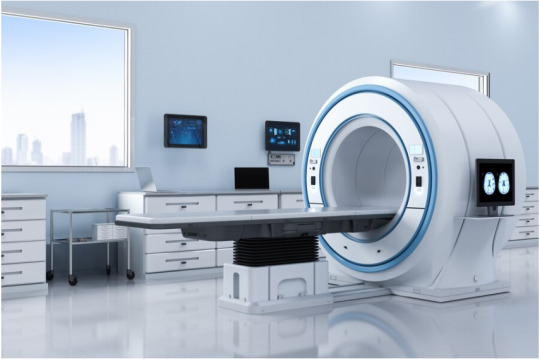
The Cost and Infrastructure Barriers
Conventional MRI systems typically require high magnetic fields (1.5 Tesla (T) to 7 T). However, these robust systems create high-resolution images at a steep price and operational demands like working in an RF shield room and consuming more than 25,000 watts of energy. On the other hand, recent advances in ULF MRI have brought a low-power, low-cost alternative to ULF MRI, as demonstrated by Yujiao Zhao and colleagues.
These innovative systems are operated utilising 0.05 T field strength and on standard wall power outlets with only 1,800 watts of a current draw during scanning. These ULF MRI systems solve electromagnetic interference problems using active sensing and deep learning technologies to provide image quality comparable to high-field MRI devices. The possibilities of such advancements enable their utilisation of smaller medical facilities or rural hospitals or clinics located in resource-constrained settings.
MRI Ambience for Enhancing Patient Experience
Technological advancements streamline costs and increase accessibility, but patient comfort in MR evaluations is fundamental to care. Improvements in patient experience have been made by innovations such as In-Bore MRI and MRI cinema for healthcare. These technologies integrate immersive audiovisual solutions, including MRI projectors and MRI-compatible displays, to create a soothing environment which reduces anxiety and increases cooperation during scans.
Patient relaxation virtual skylights, for example, create relaxing outdoor views in the confined MRI bore where the patient is situated. In addition, an MRI-compatible monitor prevents real-time visuals from interfering with the system’s magnetic field, providing patients with comfort and reassurance.
Functional MRI Systems Applications
Functional MRI systems measuring brain activity with blood flow changes have also undergone significant changes. Unlike traditional diagnostic MRI, advanced fMRI visual systems and fMRI monitors allow researchers and clinicians to perform detailed studies of neurological conditions through MRI. The MIT team demonstrates the adaptability of MRI technology to meet new healthcare and research needs with these innovations.
Portable MRI Solutions
Another game-changing development is the portability of low-field MRI systems. Their compact and lightweight designs require little logistical planning, and specialised reports are unnecessary. The MRI-compatible stretcher and wheelchair facilitate seamless interfacing with patient workflows, even in mobile or temporary medical locations.
MRI-compatible cameras and TVs further simplify operations by removing some of the obstacles that medical teams face in seeing, communicating, and doing their jobs, but without compromising the safety and operation of the MRI healthcare system.
Future Directions and Challenges
Even so, ULF MRI technology is in its infancy. Honest challenges are resolution refinement, noise reduction, and scalability. In addition, robust training programs for healthcare professionals are necessary to ensure effective use. Experts such as Udunna Anazodo and Stefan du Plessis point out that while low-field MRI has great promise, its success depends on the ability to prove its reliability and cheap enough for use in multiple clinical settings. The potential for ULF MRI to become a universally accessible diagnostic tool increases exponentially as these challenges are met.
Significant Changes with Small Impact
Healthcare developments include a shift towards patient-centred and environmentally sustainable practices by integrating new technologies, such as MRI-compatible displays and virtual skylights for hospitals. These advances improve diagnostics and address gaps in healthcare equity.
Kryptonite Solutions exemplifies this forward momentum. They can provide comprehensive MRI solutions that embrace innovation and the potential for accessibility. By focusing on supporting the advancement of healthcare technology, they are in the game to transform the way MRI systems serve global communities.
With this paradigm shift in MRI accessibility, comfort and innovation firmly underway, we are charting the future of a healthcare world that closes the diagnostic inequality gap.
#virtual skylights for healthcare#mri ambience#mri compatibles#fmri visual system#mri compatible products#mri compatible stretcher#mri compatible wheelchair#mri compatible#virtual skylights
0 notes
Text
Magic Wall Interactive Surfaces Market Size, Share, Key Opportunities, Trends and Forecasts
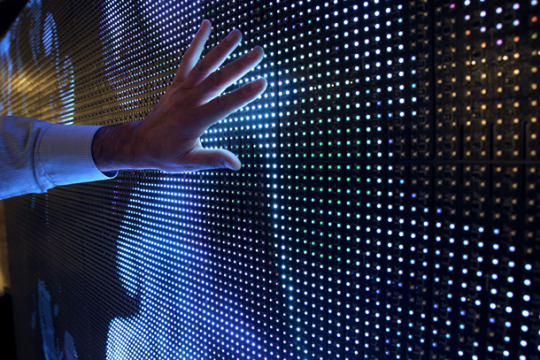
Market Overview
The Magic Wall Interactive Surfaces Market Analysis shows that CAGR will increase by 27.32% by the 2030 market forecast. The market technique acquires the shape or holograph of the things placed on these surfaces. Magic Wall Interactive Surfaces Market has boomed in recent years in becoming a fascinating technology as it gives 3D picture display a revolutionized view. These are large glass-like windows or walls that display high-resolution images at finger-touch, displaying window shopping pictures to office data we use and are authorized to communicate. Most people have opted for online shopping. Many online shopping apps have the idea that individuals can have virtual miniatures of themselves displayed and the magic walls playing dress up for them. Corporate offices have introduced smart devices like office gates that scan individuals for authorized access. Digital bright tables, projectors, whiteboards are an addition to office families making users more adaptive to the latest technology.
Hospitals have acted as the key users of Magic Wall Interactive Surfaces Market, accounting for glass walls displaying MRIs, CT scans, bones scans, ultrasounds, etc. The introduction of glass machines has given better precision to scans doctors take of patients, which offers a broader perspective of the patient’s disease. Gaming and entertainment businesses have flourished and gained popularity in functioning and premises globally. Interactive aspects between users and devices have led to a revolution in the automobile industry. Magic Wall Interactive Surfaces Market has paved their way in residential areas by introducing study devices for children to entertainment digital projectors for adults.
Get a Free Sample @
https://www.marketresearchfuture.com/sample_request/1112
Market Segmentation
By Type:
The global market has been segmented into two parts, namely hardware and software essentials by type. Software like WIFI, Bluetooth, and VPNs help connect gall surfaces to their hardware parts like cameras, whiteboards, projectors, display screens, and many more substances.
By Service:
Magic Wall Interactive Surfaces Analysis shows that it provides services in media and entertainment areas, healthcare and hospital departments, retail business, corporate offices, banks, etc. Magic Wall Interactive Surfaces Market Surfahasave different functions in different departments, from monitoring through cameras to using digital pens whiteboards for student classes and office work.
Regional Analysis
Magic Wall Interactive Surfaces Market Research Report shares a broad prospectus on the regional and global market value of the technology at hand. The market forecast is expected to grow by about 50% by 2023. America, Europe, India, China, Australia are emerging as the prominent players in the Magic Wall Interactive Market by creating a large business market. America is the leading source of hardware and software in magic wall interfaces in the media and entertainment industry. India’s launch in Tough Magix has played a vital role in digitalizing the wall and floor surfaces used as projection devices.
The players are as follows:
Vertigo (Argentina)
Envision Ltd. (US)
Touch Magix (India)
Industry News
Microsoft, Sony enterprises, Vertigo, Ubi Systems have recently made many alliances with local and global vendors in Magic Wall Interactive Surfaces using automation by identifying human patterns that drive more customers attracted to the technology.
Browse Complete Report @
https://www.marketresearchfuture.com/reports/magic-wall-interactive-surfaces-market-1112
Magic Wall Interactive Surfaces Market Research Report: Information by Technology (Hall Effect, Magneto Resistive, Variable Reluctance), By Application (Automotive, Industrial, Aerospace & Defense, Consumer Electronics) and Region (North America, Europe, Asia-Pacific, Middle East & Africa, and South America)—Forecast till 2030
* Trending Reports
Personal Cloud Storage Market
Digital Transformation Healthcare Market
About Market Research Future:
At Market Research Future (MRFR), we enable our customers to unravel the complexity of various industries through our Cooked Research Report (CRR), Half-Cooked Research Reports (HCRR), Raw Research Reports (3R), Continuous-Feed Research (CFR), and Market Research & Consulting Services.
MRFR team have supreme objective to provide the optimum quality market research and intelligence services to our clients. Our market research studies by products, services, technologies, applications, end users, and market players for global, regional, and country level market segments, enable our clients to see more, know more, and do more, which help to answer all their most important questions.
Contact:
Market Research Future (Part of Wantstats Research and Media Private Limited)
99 Hudson Street, 5Th Floor
New York, NY 10013
United States of America
+1 628 258 0071 (US)
+44 2035 002 764 (UK)
Email: [email protected]
Website: https://www.marketresearchfuture.com
0 notes
Photo
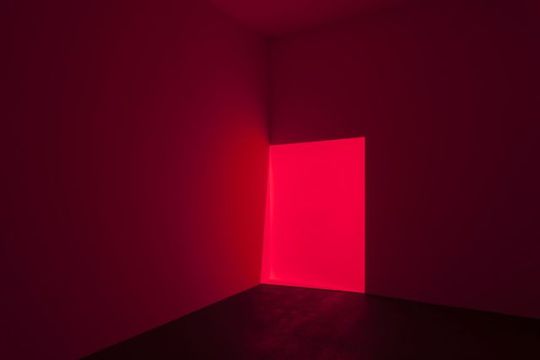
James Turrell - Sloan Red, 1968
Projektion, MRI Wire Projector Space (dimensions variables)
179 notes
·
View notes
Photo

James Turrell “Raethro Green” 1968 MRI wire projector Room size- variable
4 notes
·
View notes
Photo
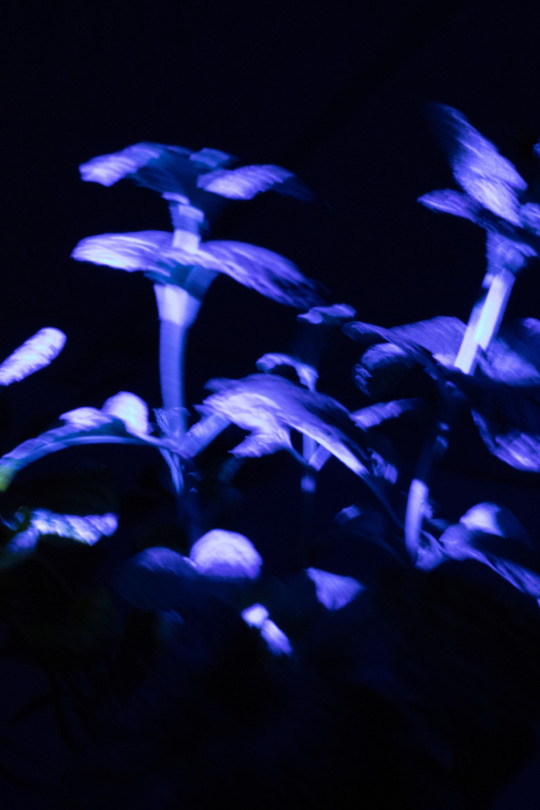
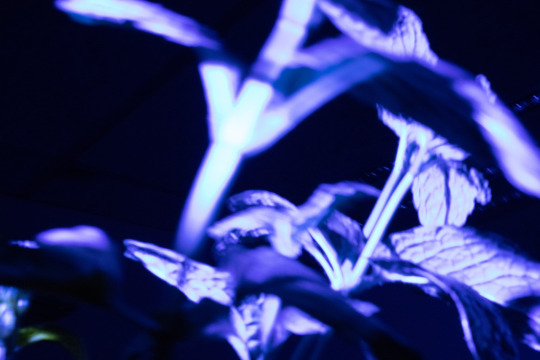
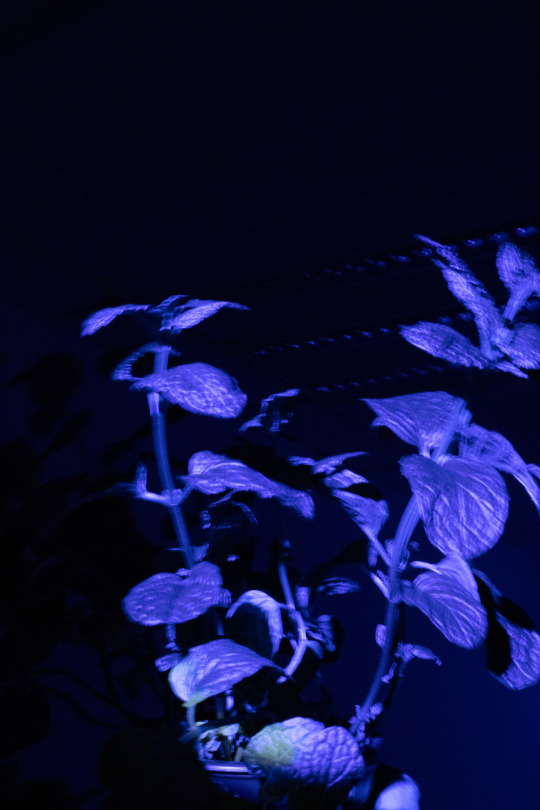
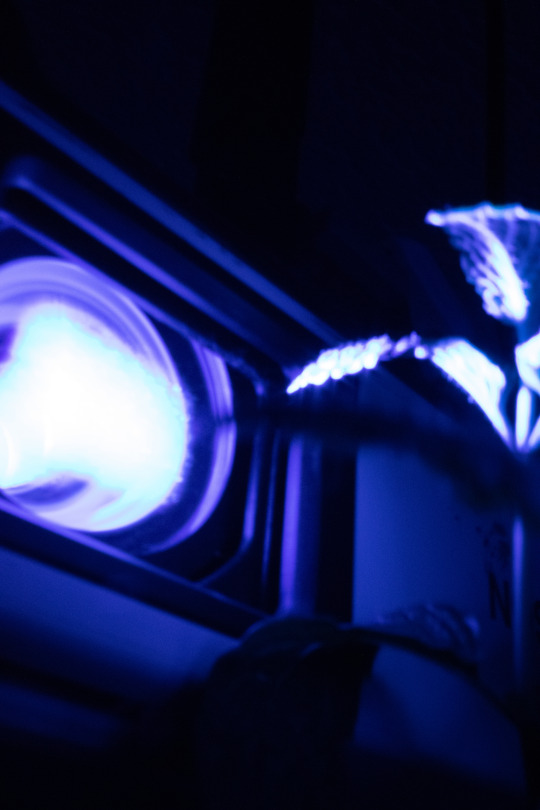
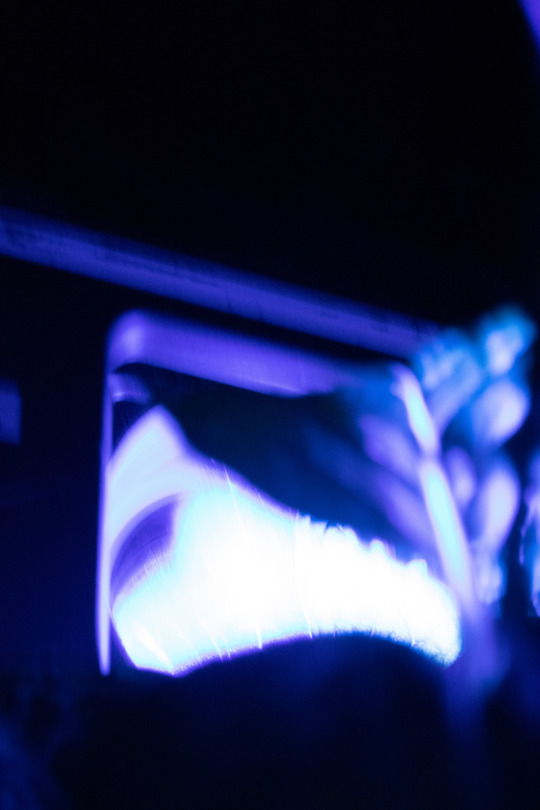
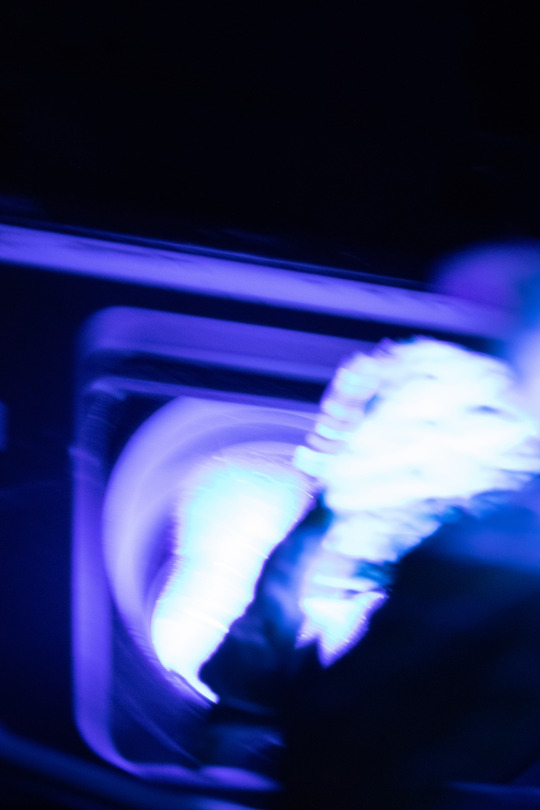
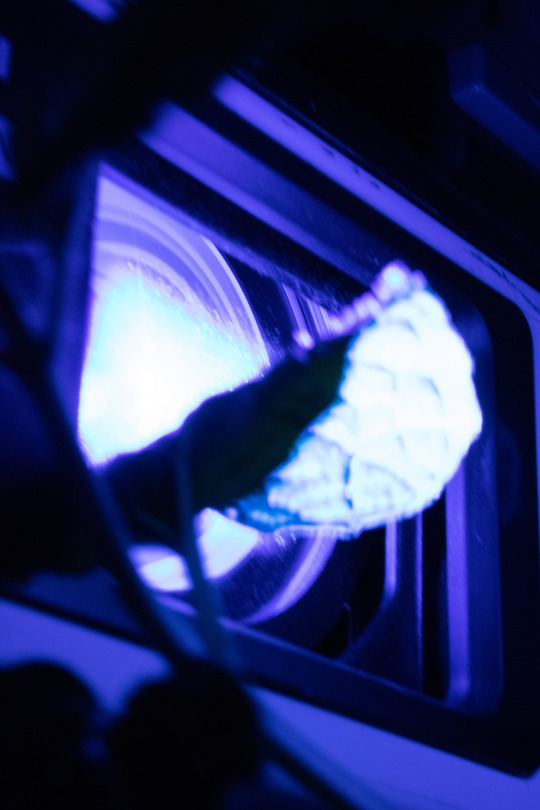
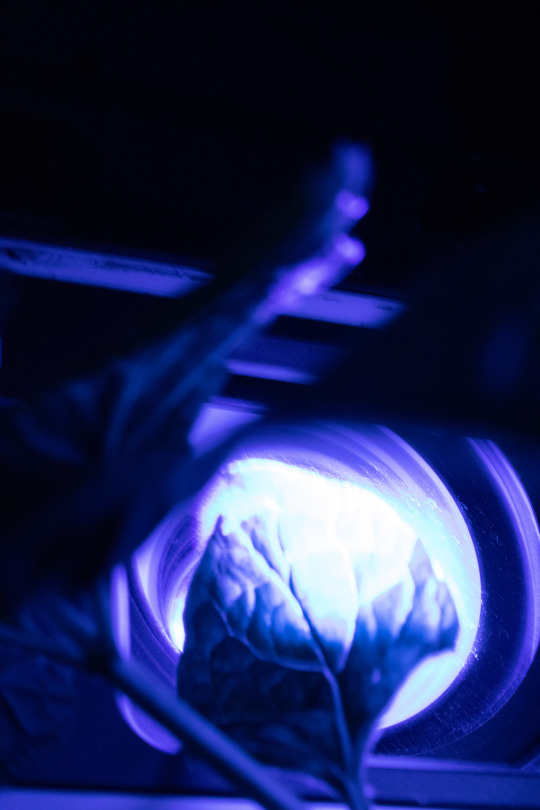
I then moved closer to the projector light to try make it feel more overwhelming, and to create a direct relationship between the artificial light and the plant. I find the images of leaves up against the projector light very compelling, the last image being my favourite. I feel allusions to MRIs, which invokes relation to the body. Also Lasers, and ultraviolet light.
1 note
·
View note
Text
DAY 3546
PuriPai, Thailand Dec 9, 2017 Sat 9:30 pm local time
Birthday - EF Ankur R Churiwal ... Sonia Ef Sunday, Dec 10, 2017 .. and our wishes for this birthday of theirs and our greetings to them for a wonderful and blessed year .. love from us all .. the Ef ..
The forests and the wild invite us again .. the winding roads, misty and fogged .. the rising sun desperately trying to sneak its rays about the horizon, in vain .. the make up routine .. the deliberations of a very dedicated team of locals and locals from across the sea, or rather the Bay .. a sincere host country .. the absence of any kind of crowd disturbance .. and the luxury of continued repetitions of a shot till there is absolute conformity and agreement to the creative and authenticity of the scene ..
Digital Camera .. that wonder in today’s times allows us this liberty .. there is now no film .. as in celluloid film, like in the past, and I often wonder why we are still called the film Industry .. a chip runs endlessly inside the digital camera, specially designed and that is the norm .. no wastage of celluloid film, a most expensive and rare ingredient in the films made in my times .. all gone .. KODAK has shut down .. and that tension of expending excessive film for a production is now all the past and irrelevant ..
As artists in those times, worried whether the shot has come out right or not, we would ask and request for another ‘take’ .. and the reprimand from the director, mostly Hrishi Da, used to be .. “ you pay for it “ and we would resign ourselves to the instincts of the master the captain of the ship, the director .. !
Now of course there are multiple monitors and gadgetry which enable us to see each and every frame in high speed to check faults .. and be allowed multiple retakes, to improve ..
Directors of our times stood by the camera while the shot was on, to start and cut the shot, to observe the artist as he or she performed .. now they all sit behind a monitor, distant from where the scene is being done, watching the artist not live, but through the projection they get on the screen of the monitor .. and better still .. thanks to the various proficient Apps., available, each scene is edited on location, within minutes and can be seen in its rough entirety to gauge its value, almost immediately ..
As opposed to those early days, when the reel containing the footage of film would be taken off the camera, put inside black clothed enclosures for fear of exposure to sun and thereby ruining the content, packed inside tin boxes specially designed in circular fashion, for that was how they were loaded on to the camera for shooting and play .. sent off to the Laboratory for processing, generally involving days, delivered to special editing rooms of the editor of the film, cut through a long arduous process - where each frame of celluloid was run on an editing machine, a Moviola and then later on a modernised version brand named Steinbeck .. intricate decision making by the editor without any technical help or assistance, sending it off to be seen in a regular mini theatre through projector, to be able to see .. to see the scene shot .. taking months at times ..
NOW ..
All that process wiped out in time, by computerisation .. much like the prediction in times to come, of the computer wiping out civilisation .. that is if we survive the other more recent and alarming discovery of the largest Black Hole in the galaxy .. 800 million times the mass of the Sun .. !!
The Hole having the ability to suck in and devour the entire hemisphere and our world about us .. fortunately we are safe for now, .. ‘for NOW’ .. as the scientist analysing its effect confided to anxious enquiries .. since .. that phenomena, was still some billions of light years away from us mere mortals .. !!
“OK everyone breathe normally” .. ! As the voice inside that MRI tube comes, from the medical team, drafting and compiling the imagery of the insides of your body ..
‘None of us shall be around when that happens .. !!’
Stars, the galaxy, the astronomical adventures and discoveries each coming year, bringing us closer to the very existence of us all .. the hemisphere, the world we live in, the planets and so much more .. so so intriguing !
When elders pass away, the questions asked by the grandchildren of young age, on the sudden absence of their Dada or Nana .. the response from parents has always been, ‘they went away to become a star .. up in the sky, in the Heavens’ .. and the look of belief in the innocent eyes of the child are enough to seek another living for ourselves ..
Seems odd .. but as my Father aged, on one fine day, he asked me whether it would be possible to get him a powerful telescope in the house .. I readily agreed and got him one .. he would spend time trying to learn its functioning ; they are a little complicated in its operation, and spend a lot of time as night came about, to look into the skies ..
Looking into the skies .. ?
Perhaps to seek a reserved destination for them, after their passing .. perhaps .. I never did ask my Father why ..?
And in time, when I shall be asked similar question, I too would not have reasonable answer ..
AND .. just an after thought ..
.. is it normal for the ones that age to wish to connect with those that time has kept away from us .. old school friends, relatives ignored till now and wanting to reconnect .. matters of the past ; incidents, locations, people ..
Is it .. ?

Amitabh Bachchan
124 notes
·
View notes
Text
JAMES TURREL
1943-presente

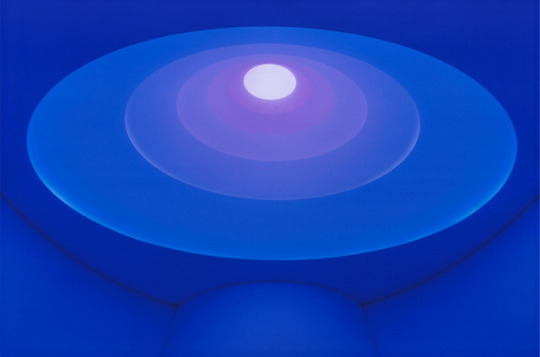
Aten Reign, 2015
Digital inkjet print
109.2 × 161.3 cm
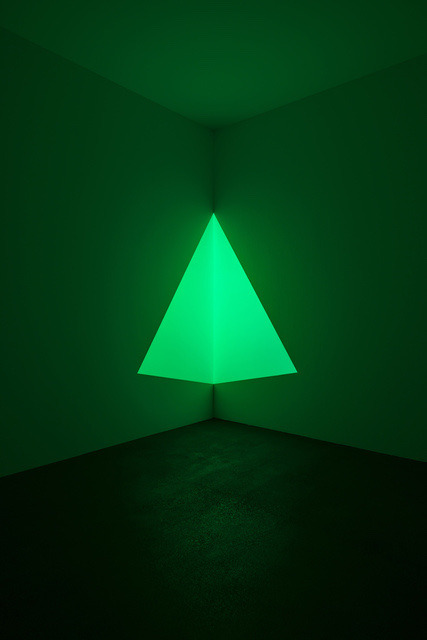
Raethro Green, 1968
MRI wire projector; room size- variable
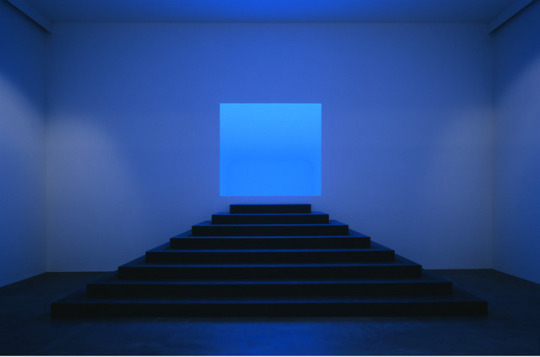
Dhātu, 2010
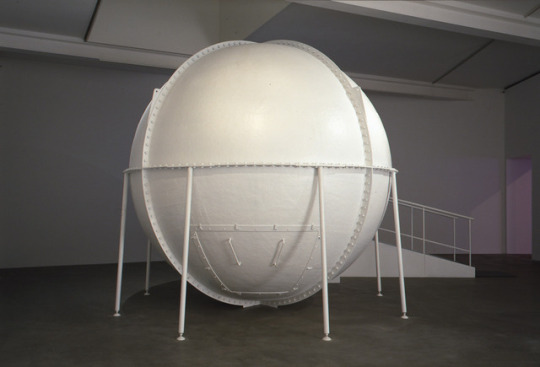
Bindu Shards, 2010
420.8 × 653.1 × 744.2 cm
#James turrell#turrell#t#instalacion#color#america#Pomona college#luz#wolf prize#university of California Irvine#MacArthur fellowship#Claremont graduate university
0 notes
Text
Breakthrough Tech Offers Stunning MRI Experience for Life
MRI scans can be long, expensive, and out of reach for a large group of people who require them. Recent technological developments in MRI are establishing the basis for a change in paradigm, the efficacy of which promises to offer faster, cheaper, and patient-centric alternatives.
Recently, a Swedish company made available a new innovative software that will allow not only increased imaging speed but also the ability to make MRI available again. Software that shortens scan times by 15 minutes, from 45 min to a few min. This evolution characterises a way to circumvent the present limitations of MRI technology, which could be considered a useful diagnostic and preventive medicine application. This progress has opened the door to its widespread application in the early detection of diseases, which may prevent thousands of deaths per year.
One of the most recent advances in MRI technology is in-bore MRI systems, which have been used to maximise patient comfort during MR studies. Traditionally, patients undergoing MRI often experience anxiety due to the enclosed environment and the extended duration of the procedure. Today’s systems have circumvented this by integrating MRI Ambience rooms and MRI cinemas in medicine, offering a soothing and entertaining stimulation during scanning. These advances are especially useful to minimise motion artefacts due to patient pain, which in turn leads to better diagnostic performance.
Apart from the ambience environment, technologies such as the MRI-compatible projector and FMRI visual systems are changing the ways in which patients interact with MRI scanners. These are the instruments that provide visual interaction, which is clinical calm for the patient and which aids in intended diagnostic, e.g., functional MRI (fMRI) or brain activity visualisation.
Advances in MRI-compatible equipment have not only expanded the total number of investigations that can be done but also the quality of imaging on a voxel-by-voxel basis. For example, the presence of displays with MRI-compatible screens and MRI-compatible displays eliminates electromagnetic crosstalk and provides continuous distinct visual output while undergoing procedures, enabling clinicians to view scans as they are undergoing examinations. Similarly, technologies such as the MRI-compatible stretchers and MRI compatible wheelchairs have become available. Therefore, they promote the adoption of the procedure and offer the opportunity for the patient to be transported easily within the building where it is located.
Another major trend is the fMRI system, which has provided the most accurate brain imaging to date. Such a technology allows us to identify very minor changes in brain activity with a view to preventing early diagnosis of a variety of neurological disorders. There is the paradigm that such tools are an example of how the innovations transform magnetic resonance imaging (MRI) systems into health care systems linked to each other and the patients.
The conventional price of magnetic resonance imaging (MRI) scans has been subject to critique, and MRI has been limited in its applications to preventive health care use. To this end, virtual skylights for both medical care and patient entertainment are being embedded into MRI bore to provide relaxing environments at a lower cost. These approaches also help enhance patient experience, and MR technology has become a more feasible solution for outpatient and smaller clinical settings.
The emergence of In-Bore MRI in India is a significant development in offering high-technology imaging to developing countries. Being able to reduce acquisition times and produce higher quality results, these systems are bridging the gap between high-tech and low-tech, bringing them one step closer to ubiquitous use in healthcare systems with finite healthcare resources.
Despite the progress in MRI technology, the problem of false positives and false negatives continues to exist. These challenges can divert or consume resources from the management of directly sick individuals or can lead to nonproductive procedures. Innovations, for example, the interest in the fMRI display and MRI-based endoscopes, use a prerequisite and hence overcome these limitations with high-resolution imaging and an improvement in diagnostic ability. The usefulness of these tools allows the conducting of longitudinal studies that follow patient health changes over time and reduce the chance of diagnostic mistakes.
An exciting development is the MRI-compatible TV, which provides real-time imaging and direction to patients during examinations. By integrating these devices, clinicians are able to provide an interactive and less stressful environment, particularly for paediatric and claustrophobic patients.
Kryptonite Solutions is among the companies that are pioneering this field and has claimed the position of being at the forefront of new MRI solutions. Focusing on patient comfort and diagnostic efficiency, Kryptonite Solutions provides the state of the art technology for current healthcare needs. Through the addition of state-of-the-art capabilities such as MRI-compatible displays and user-configurable ambient settings, they further play a role in the development of MRI technology with a more accessible and patient-centred approach.
The continuous transition of MRI systems leads from the reactive to the preventive and personalised type of medicine. Shorter scan times, lower costs, increased patient comfort, and enhanced diagnostic sensitivity are just some of the ways in which these advances will transform medical imaging.
With the advancement of the field, the companies of Kryptonite Solutions will continue to play an important role in bringing these improvements to those populations who are most in need. Now, with these advances, the dream of regular, full-body scans for detecting disease early is a real possibility- that is, giving each and every one of us a fair chance for a brighter future.
#fmri visual system#mri compatibles#mri ambience#virtual skylights for healthcare#mri compatible stretcher#mri compatible wheelchair#mri compatible products#mri compatible#mri safety product
0 notes